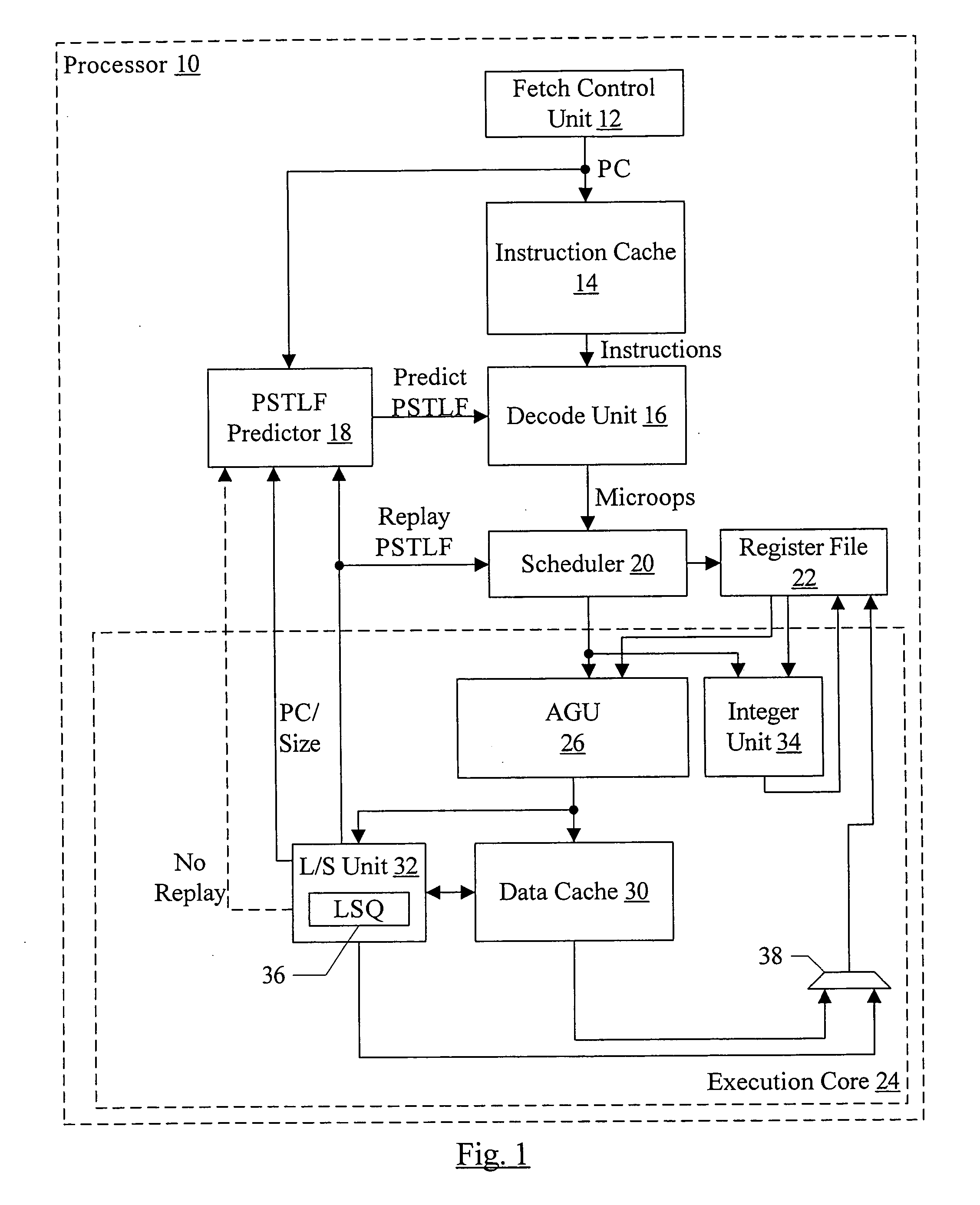Partial load/store forward prediction
a technology of partial load and forward prediction, applied in the field of processing, can solve the problems of design performance loss, complex hardware implementation, and high implementation cos
- Summary
- Abstract
- Description
- Claims
- Application Information
AI Technical Summary
Benefits of technology
Problems solved by technology
Method used
Image
Examples
Embodiment Construction
[0017] A processor may include a partial store to load forward (PSTLF) predictor that predicts which loads are likely to experience a PSTLF event. As used herein, a PSTLF event may occur if at least one byte accessed by a load is updated by a previous uncommitted store and at least one other byte accessed by the load is not updated by that same previous uncommitted store. An uncommitted store may refer to a store which has not yet been written to its destination (e.g. it may be queued awaiting non-speculative status or awaiting an opportunity to update the data cache or memory). For example, in one implementation, uncommitted stores may be stored in a load / store queue (LSQ) in a load / store (L / S) unit within the processor. A previous uncommitted store, when referring to a particular load, may be an uncommitted store that is prior to the particular load.
[0018] In response to a PSTLF prediction for a load instruction, the processor may increase the number of load operations generated ...
PUM
 Login to View More
Login to View More Abstract
Description
Claims
Application Information
 Login to View More
Login to View More - R&D
- Intellectual Property
- Life Sciences
- Materials
- Tech Scout
- Unparalleled Data Quality
- Higher Quality Content
- 60% Fewer Hallucinations
Browse by: Latest US Patents, China's latest patents, Technical Efficacy Thesaurus, Application Domain, Technology Topic, Popular Technical Reports.
© 2025 PatSnap. All rights reserved.Legal|Privacy policy|Modern Slavery Act Transparency Statement|Sitemap|About US| Contact US: help@patsnap.com



